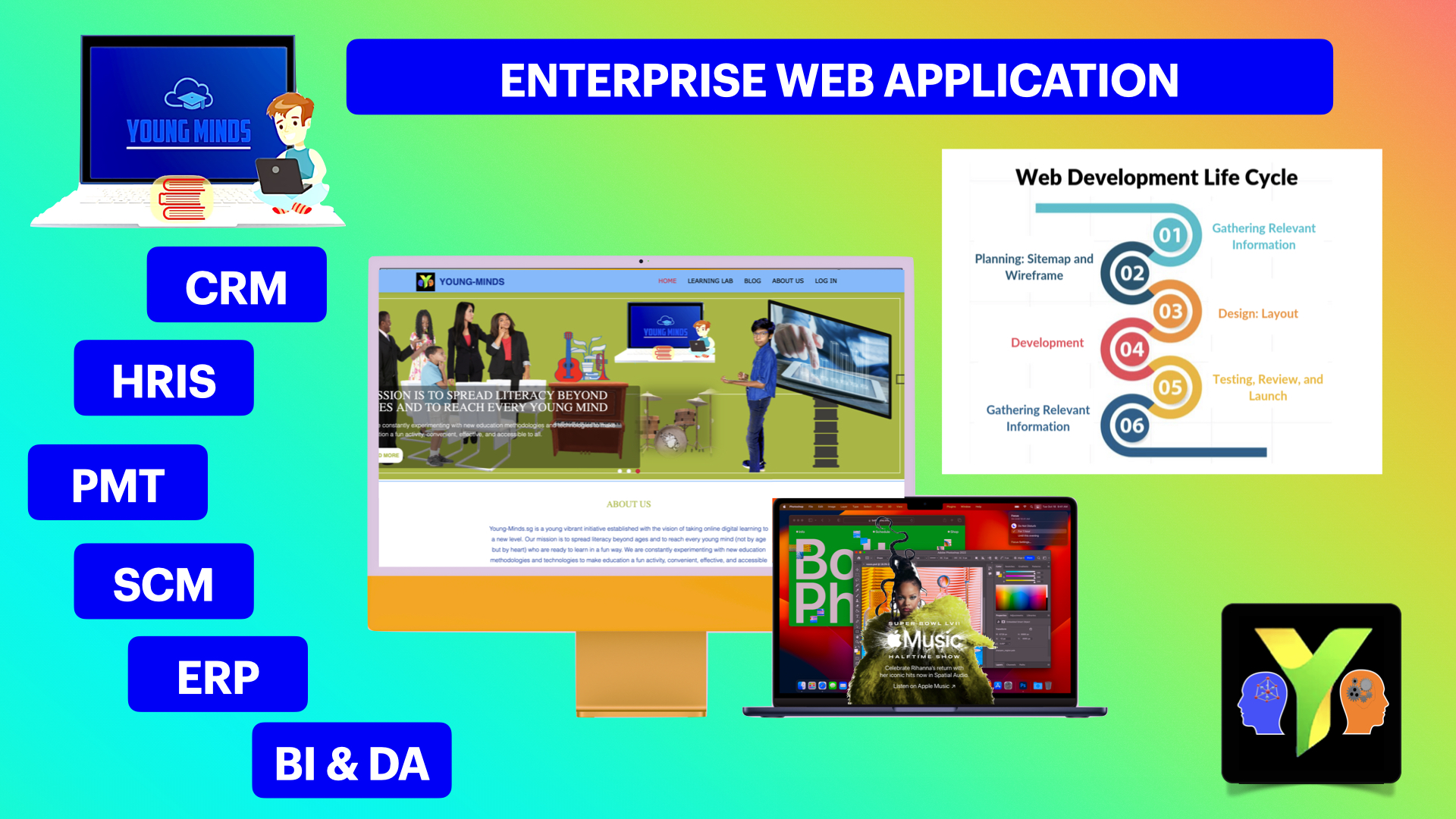Beginner’s Guide & Building blocks to Design an enterprise web application [Part I]
Building an enterprise web application can be a complex and challenging task, but by following the right steps and using the right tools, you can create a robust, scalable, and user-friendly solution that meets the needs of your organization.

Here are some of the key building blocks and guidelines to consider when designing an enterprise web application:
- Define your requirements: Start by understanding the needs and goals of your organization and defining the requirements of your web application. This could include functional requirements, performance requirements, security requirements, and more.
- Choose a suitable architecture: Consider the architectural design of your application and decide on a suitable pattern that meets your requirements. Popular options include the three-tier architecture, microservices architecture, and single-page application (SPA) architecture.
- Select a technology stack: Based on your requirements and architecture, choose a technology stack for your web application. This could include a combination of front-end technologies like HTML, CSS, and JavaScript, and back-end technologies like Python, Ruby on Rails, or Node.js.
- Design a user-friendly interface: A well-designed user interface (UI) is crucial for the success of any web application. Make sure to include elements that are intuitive and easy to use, while also ensuring that the interface is aesthetically pleasing and visually appealing.
- Consider security: Enterprise web applications must be secure and protect sensitive data. Consider implementing security measures like encryption, firewalls, and secure socket layer (SSL) certificates.
- Test and iterate: Test your web application thoroughly before launching it and make changes based on user feedback. Continuously monitor performance and make updates and improvements as needed to ensure that your application remains effective and efficient.
- Deploy and scale: Once your web application is ready, deploy it to a production environment and monitor performance. Plan for scalability by using cloud-based infrastructure and adopting DevOps best practices.
These are just a few of the key building blocks to consider when designing an enterprise web application. By following these guidelines and keeping in mind the needs of your organization, you can create a solution that meets your requirements and provides value to your users.
Enterprise web applications are software solutions designed specifically for businesses and organizations to help them manage various operations, processes, and tasks. Here are a few examples of enterprise web applications:
- Customer Relationship Management (CRM) systems: These systems help businesses manage interactions with customers and potential customers. Examples include Salesforce, Hubspot, and Zoho CRM.
- Human Resources Information Systems (HRIS): HRIS systems help manage the recruitment, training, and management of employees. Examples include Workday, BambooHR, and ADP Workforce Now.
- Project Management Tools (PMT): These tools help businesses manage and track projects and tasks. Examples include Asana, Trello, and JIRA.
- Supply Chain Management (SCM) systems: These systems help businesses manage the flow of goods and services from suppliers to customers. Examples include SAP Ariba, Oracle SCM Cloud, and Infor SCM.
- Enterprise Resource Planning (ERP) systems: ERP systems provide an integrated view of core business processes and help organizations manage various business functions, including finance, accounting, and human resources. Examples include SAP S/4HANA, Oracle ERP Cloud, and Microsoft Dynamics 365.
- Business Intelligence (BI) and Data Analytics (DA): These solutions help organizations collect, store, and analyze data to make better business decisions. Examples include Tableau, PowerBI, and QlikView.
These are just a few examples of enterprise web applications, but there are many other types of solutions available to meet the unique needs of different businesses and organizations.

